Can You Drive Summer Tires In Cold Weather?
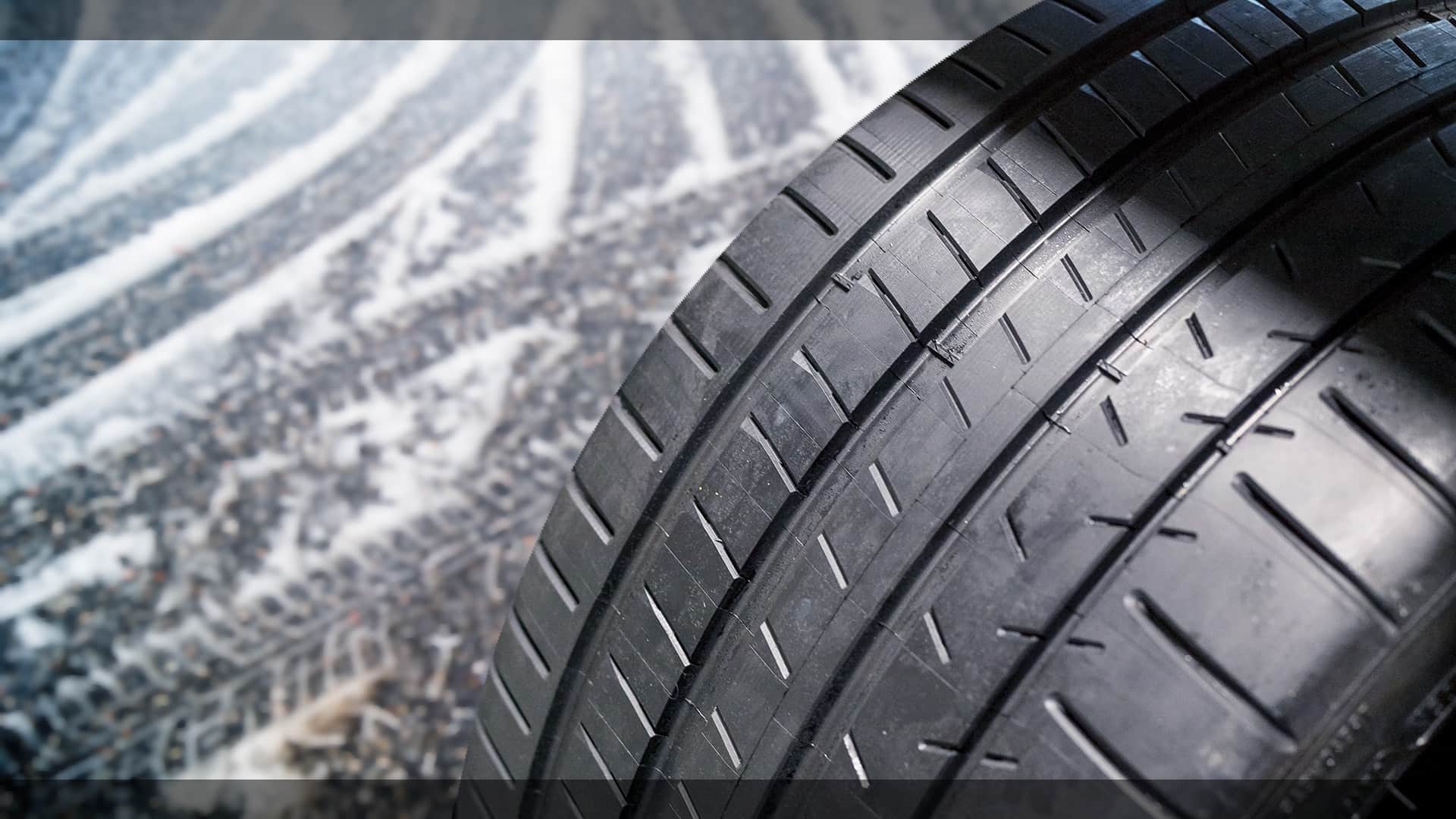
As the seasons change, so do our driving conditions, and it’s essential to be prepared for what Mother Nature may have in store. One common question among drivers is whether they can safely use their summer tires during colder months or if they need to switch to winter tires.
Summer tires are designed to provide excellent grip and handling in warm weather conditions. They are made of a harder rubber compound that does not perform well in cold weather. As the temperature drops below 7°C (45°F), summer tires lose their flexibility and become stiff, resulting in reduced traction, longer stopping distances, and poor handling.
Therefore, it is NOT recommended to drive summer tires in cold weather conditions. Instead, it is advisable to switch to winter tires or all-season tires, which are designed to perform well in colder temperatures and provide better traction and handling in snowy and icy conditions.
The Drawbacks Of Using Summer Tires In Winter
Reduced Traction And Braking Performance
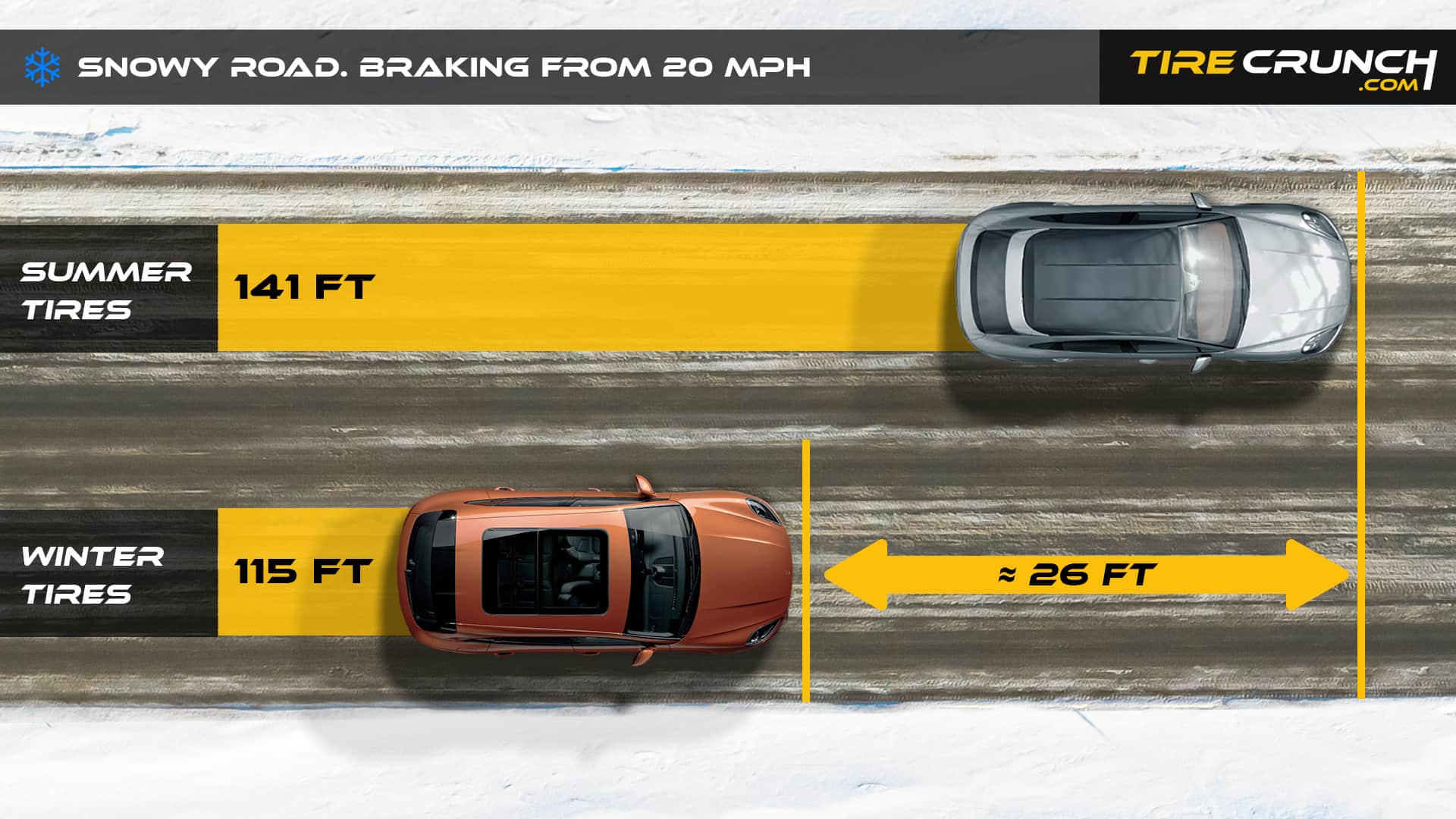
As previously mentioned, summer tires are designed with rubber compounds that perform best in warm weather. When temperatures drop below 45 degrees Fahrenheit, the same rubber compound becomes hard and loses its elasticity.
This results in reduced traction and braking performance, making it harder to stop your car on slippery roads. For example, it may take 26 feet longer for your vehicle to come to a full stop if you brake at 20 mph on snowy roads while using summer tires versus winter tires.
On the other hand, winter tires are designed with a different compound that remains soft and elastic even in cold temperatures.
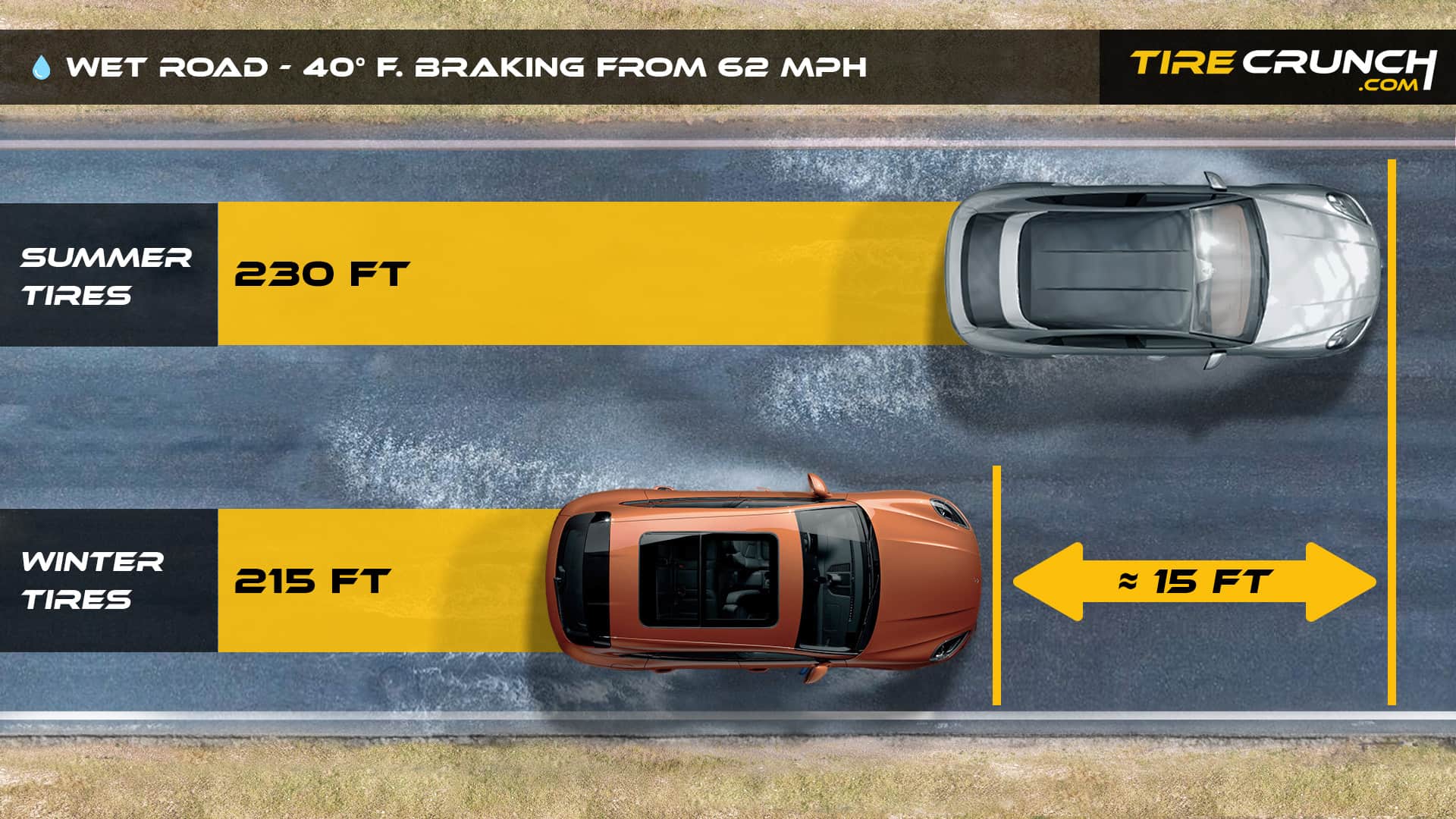
Additionally, the tread of the summer tires features less grooving and more rubber in contact with the road, which enhances water dispersion capability while boosting traction in wet and dry conditions.
However, when it comes to winter driving conditions such as snow or ice-covered roads, the same characteristics of summer tire tread patterns become problematic.
A lack of deep grooves fails to effectively channel snow away from the tire’s surface, which leads to an increased chance of hydroplaning or skidding on slippery surfaces.
In comparison, winter tires boast aggressive tread blocks with high void-to-block ratios that dig into snowy terrain for a better traction.
Rubber Cracking
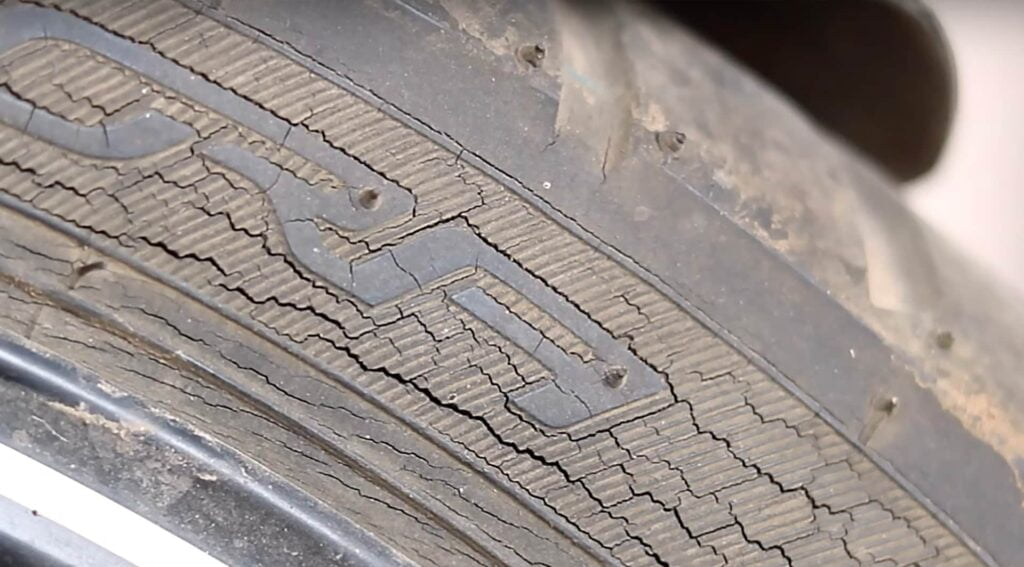
Driving with summer tires in cold weather can lead to tread compound or sidewall cracking, which occurs when the rubber loses its elasticity and becomes more rigid.
This is caused by a phenomenon known as glass transition. Essentially, when temperatures drop below the optimal range for summer tires, the rubber becomes hard and brittle like hockey pucks.
On the other hand, winter tires feauture soft treads and a rubber compounds which contain special additives for preventing cracking in extreme cold temperatures.
The Ideal Temperature For Summer Tires
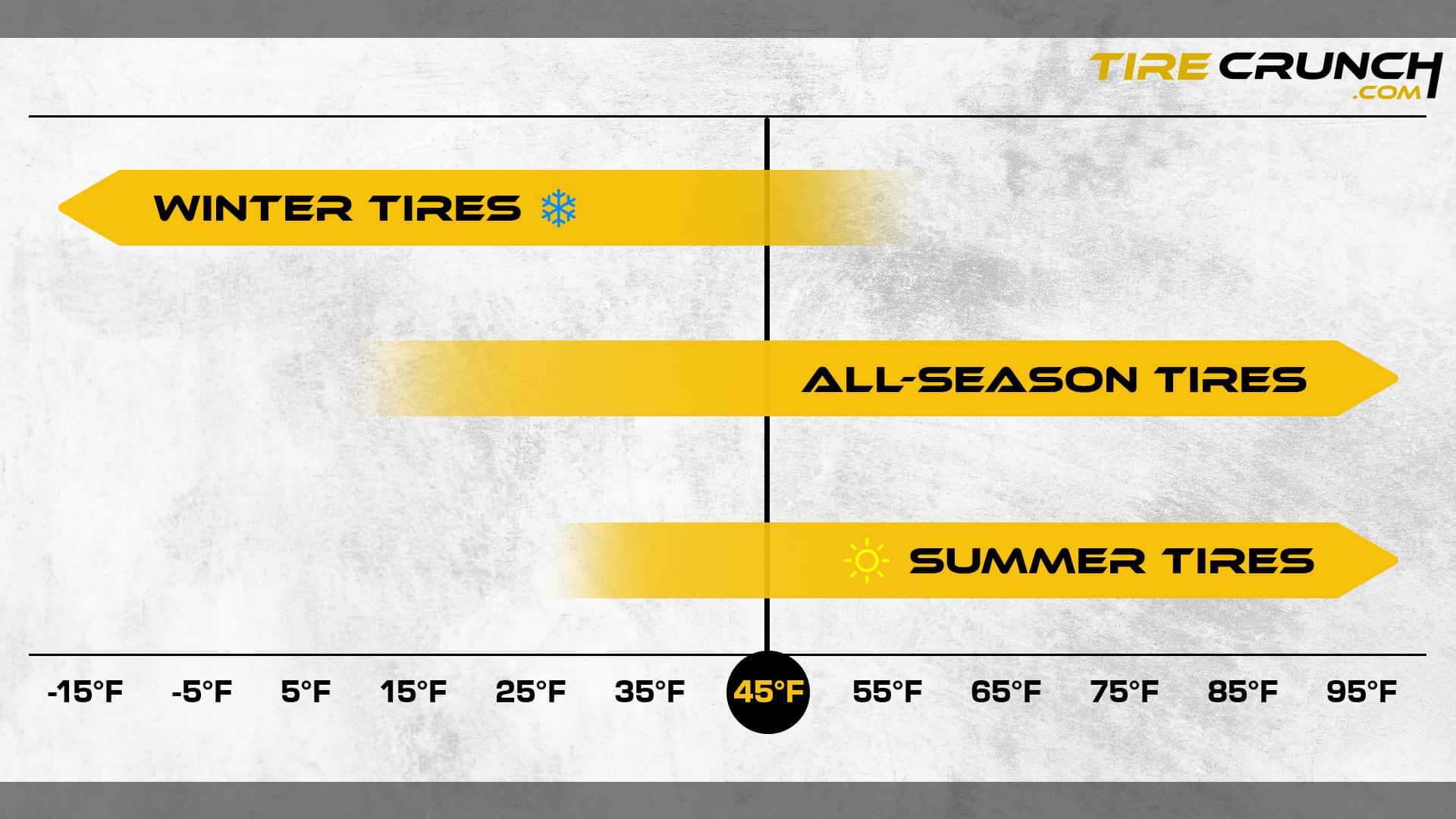
Summer tires are designed to perform best in warm weather, typically between 40°F and 90°F temperatures.
Alternatives To Driving On Summer Tires In Cold Weather
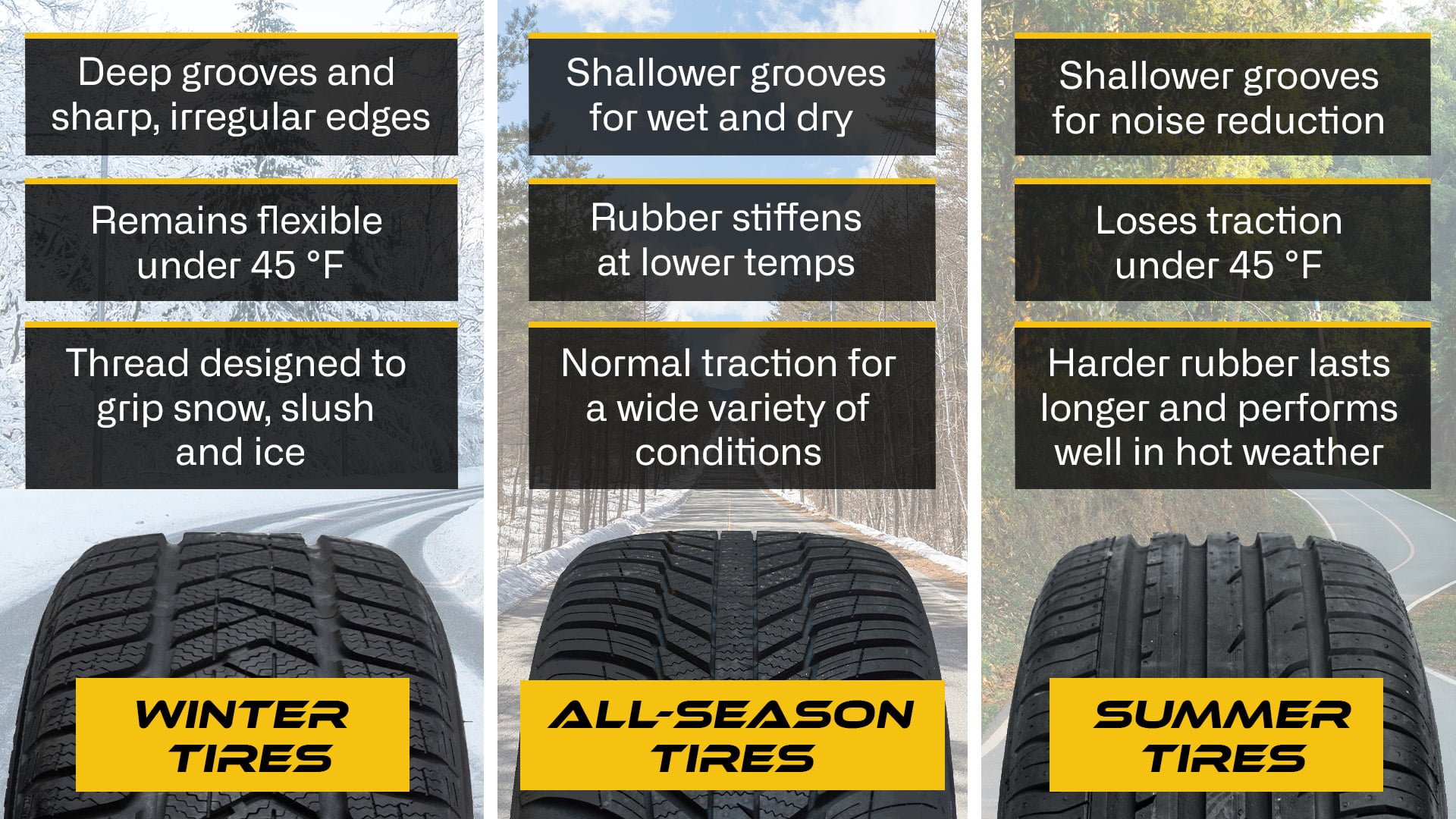
All-season Tires
All-season tires are a popular choice for drivers who prefer year-round convenience. All-season tires have a deeper tread than summer tires, allowing for better traction in wet or snowy conditions.
While all-seasons offer the best of both worlds when it comes to convenience and versatility, it is important to note that they will never be an ideal replacement for dedicated seasonal rubber like winter-specific or summer options.
Winter Tires
Winter tires are specifically designed to provide better traction, handling, and braking in cold weather conditions. They have a softer rubber compound that stays flexible even at freezing temperatures, allowing them to grip the surface better than summer tires.
Winter tires also have deeper tread patterns with large grooves that help them maintain traction on wet and snowy roads.
The Importance Of Switching To Winter Tires
Switching to winter tires is not only necessary for your safety but also legal, and failing to do so may result in hefty fines and penalties.
Legal Requirements
Each state in the U.S. has its own set of regulations when it comes to winter tires. For example, in Alaska, all vehicles must have snow tires from October 1 to April 15.
Meanwhile, California does not have a statewide requirement for winter tires, but some mountainous regions may require them during certain times of the year.
Failing to comply with these rules can result in fines and penalties. For instance, in some states like Colorado and Utah, not having proper snow tires on certain roads during specified times can lead to being ticketed and fined up to $1,000.
Insurance Implications
Many car owners assume that their insurance policy will cover any damage incurred while driving.
However, insurance companies require drivers to take reasonable safety measures when using their vehicles, including ensuring they are equipped with appropriate tires for changing weather conditions.
Insurance companies may classify it as negligence and refuse to cover damages caused by accidents if you choose to use summer tires on snowy and icy roads.
When To Switch To Winter Tires
It is recommended to switch to winter tires when temperatures consistently drop below 45°F (7°C) and there is a risk of snow, ice, or freezing rain.
Storing Summer Tires During Winter
Properly storing your summer tires during the winter months is crucial to extend their lifespan and ensure their safety when you switch back to them in warmer weather.
Related Reading: Can You Use Winter Tires All Year?
Cleaning is one important step to take when storing summer tires during the winter season. Here are some tips to ensure your tires remain in good condition:
Ideal Storage Conditions
When storing summer tires during winter, it’s important to ensure that they’re kept in optimal conditions to maintain their quality and longevity. The ideal storage location is:
Conclusion: Choosing The Right Tires For Your Climate And Driving Needs
In conclusion, while summer tires may offer fantastic grip on both wet and dry roads during the warm months, they are not suitable for cold weather conditions. Using them in winter can lead to reduced traction, increased wear and damage, and a higher risk of accidents. Instead of relying on summer tires all year round, consider switching to all-season or winter tires depending on your climate and driving needs.
Winter tires are specifically designed with soft elastic treads that provide better handling in cold and icy conditions. They also have improved stability and stopping distance compared to summer or all-season varieties. It’s crucial to follow local regulations regarding winter tire use as fines for non-compliance can be hefty.
